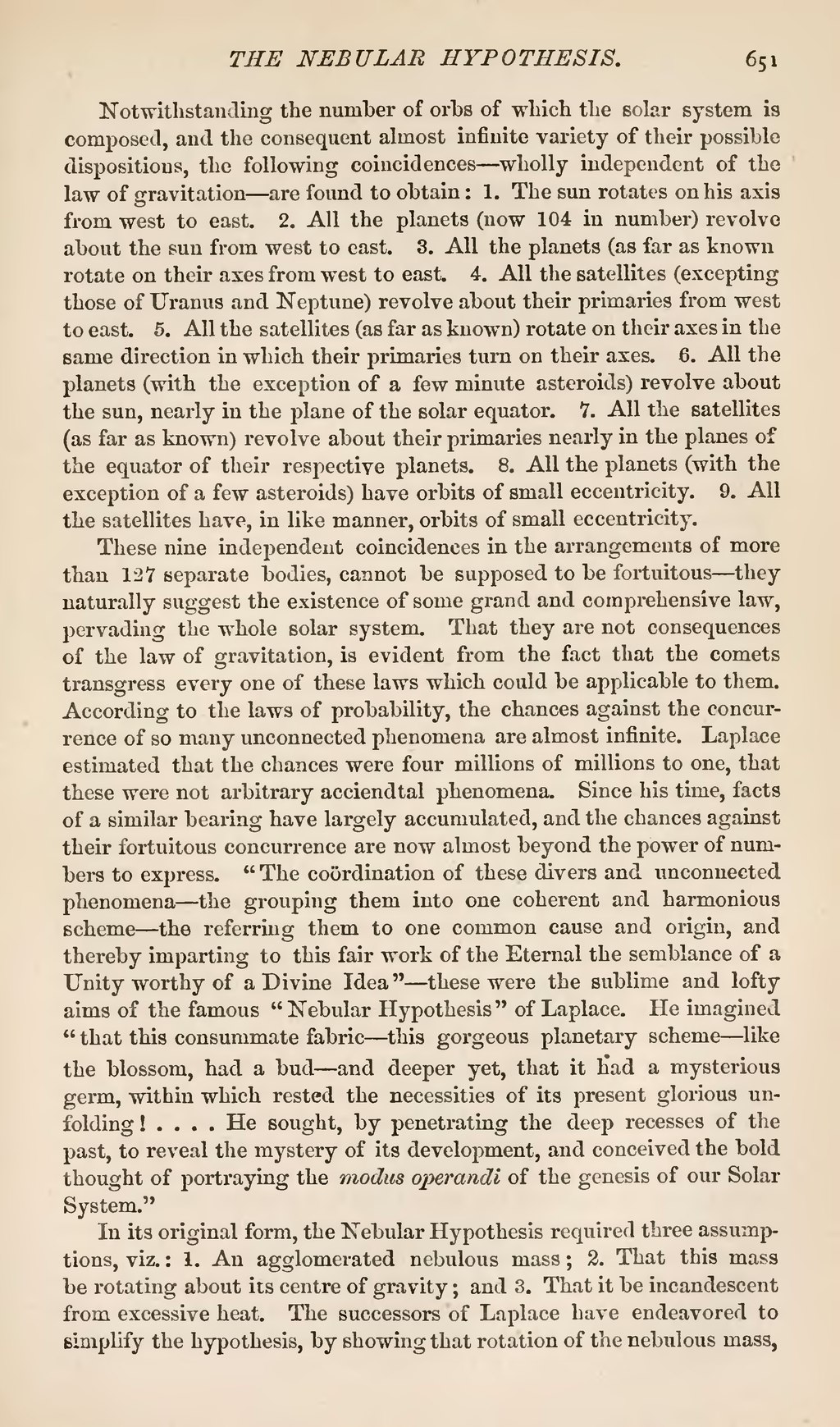Notwithstanding the number of orbs of which the solar system is composed, and the consequent almost infinite variety of their possible dispositions, the following coincidences wholly independent of the! law of gravitation—are found to obtain: 1. The sun rotates on his axis from west to east. 2. All the planets (now 104 in number) revolve about the sun from west to east. 3. All the planets (as far as known rotate on their axes from west to east. 4. All the satellites (excepting those of Uranus and Neptune) revolve about their primaries from west to east. 5. All the satellites (as far as known) rotate on their axes in the same direction in which their primaries turn on their axes. 6. All the planets (with the exception of a few minute asteroids) revolve about the sun, nearly in the plane of the solar equator. 7. All the satellites (as far as known) revolve about their primaries nearly in the planes of the equator of their respective planets. 8. All the planets (with the exception of a few asteroids) have orbits of small eccentricity. 9. All the satellites have, in like manner, orbits of small eccentricity.
These nine independent coincidences in the arrangements of more than 127 separate bodies, cannot be supposed to be fortuitous—they naturally suggest the existence of some grand and comprehensive law, pervading the whole solar system. That they are not consequences of the law of gravitation, is evident from the fact that the comets transgress every one of these laws which could be applicable to them. According to the laws of probability, the chances against the concurrence of so many unconnected phenomena are almost infinite. Laplace estimated that the chances were four millions of millions to one, that these were not arbitrary accidental phenomena. Since his time, facts of a similar bearing have largely accumulated, and the chances against their fortuitous concurrence are now almost beyond the power of numbers to express. "The coördination of these divers and unconnected phenomena—the grouping them into one coherent and harmonious scheme—the referring them to one common cause and origin, and thereby imparting to this fair work of the Eternal the semblance of a Unity worthy of a Divine Idea"—these were the sublime and lofty aims of the famous "Nebular Hypothesis" of Laplace. He imagined "that this consummate fabric—this gorgeous planetary scheme—like the blossom, had a bud—and deeper yet, that it had a mysterious germ, within which rested the necessities of its present glorious unfolding! . . . . He sought, by penetrating the deep recesses of the past, to reveal the mystery of its development, and conceived the bold thought of portraying the modus operandi of the genesis of our Solar System."
In its original form, the Nebular Hypothesis required three assumptions, viz.: 1. An agglomerated nebulous mass; 2. That this mass be rotating about its centre of gravity; and 3. That it be incandescent from excessive heat. The successors of Laplace have endeavored to simplify the hypothesis, by showing that rotation of the nebulous mass,

